| | |
 Crofton Pumping Station
Crofton Pumping Station |
 |
Grafton, Wiltshire KAC34.53 |
|

|
KandAC mile 34
|
|
|
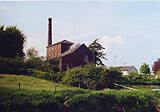
|
Crofton Pumping Station from across the canal.
|
|
|
The summit pound of the canal is across chalk downland where water is
scarce; every boat leaving this summit pound uses a lockful of water,
washing away. Water is available from springs near Wilton village. It
is impounded in Wilton Water which is used to feed pumping engines
which lift the water 40ft to summit level. There are two beam engines
at Crofton; the first was built 1801 and installed here to start work
1809, the second engine started 1812, built by Boulton and Watt. The
1812 engine was converted to the Cornish Cycle, with a higher steam
pressure, in 1845. A replacement for the 1809 engine was installed
1846-47, a Sims combined engine supplied by Harvey and Co, Hayle,
Cornwall, re-using the Boulton and Watt parallel motion from the 1809
engine. At first there were low pressure wagon top boilers, steam at
4.5psi; these were replaced in 1845 by Cornish boilers in 1845, steam
at 10psi; and today there are Lancashire boilers fitted by the Great
Western Railway, providing steam at 20psi. Water is lifted 40ft from
the inlet and runs from here by Crofton Feeder, along a contour on the
north side of the railway. It feeds into the canal on the upper side
of lock 55, Crofton Top Lock.
|
|
|

|
Water is taken off by the pumps from the off side of the canal, under
the railway, and so on.
|
|
|
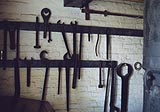
|
Large engines need large tools.
|
|
|
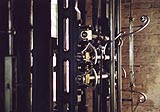
|
|
|
|
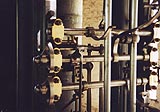
|
|
|
|
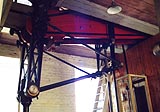
|
Parallel motion connecting piston and beam end.
|
|
|
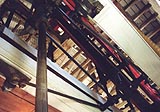
|
Parallel motion connecting piston and beam end.
|
|
|
The piston rod must go straight up and down, or damage the cylinder,
the end of the beam must of necessity move in a curve. James Watt
invented an approximate 'parallel motion' to connect these two
essential elements of a steam engine in 1784. An exact parallel
linkage was not invented until Peaucellier, 1864.
|
|
|
Cundy, H M & Rollet, A P: 1957: Mathematical Models: Oxford University
Press
|
|
|
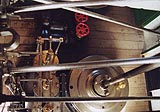
|
Cylinder head etc.
|
|
|
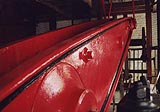
|
The beam, part of it!
|
|
|
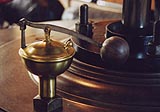
|
Safety valve?
|
|
|
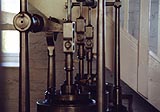
|
|
|
|
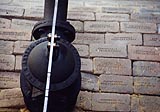
|
Safety valve on the boiler, and insulating brickwork.
|
|
|
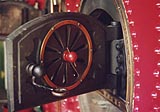
|
Fire door.
|
|
|
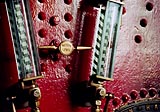
|
Sight glasses, water gauges for the boiler.
|
|
|
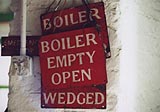
|
|
|
|
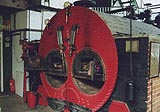
|
One of the boilers installed by the Great Western Railway, GWR,
Swindon Works, Wiltshire.
|
|
|
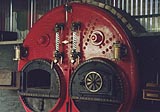
|
One of the boilers installed by the Great Western railway, Swindon
Works, Wiltshire.
|
|
|
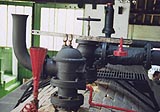
|
Safety valve and other clutter atop a boiler.
|
|
|
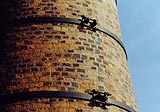
|
The pumping station chimney is built in header bond brickwork bound
with wrought iron - probably steel nowadays, and much repaired.
|
|
|
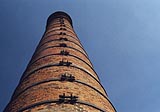
|
So - it's a cliche - what else do you photograph? The chimney is 20ft
or so shorter than it was, to make it safer, and has an electric fan
to help the draught.
|
|
|
Nowadays you can see the smoke when the engines are in steam. When
built the engines had to 'consume their own smoke' or the engineman
would be sacked, as stipulated by the Earl of Ailesbury who lived at
Tottenham Park a mile or so NW.
|
|
|
Bradley, Ian: 1952 (June): Crofton Beam Engines: Model Engineer
|
|

|
Kennet and Avon Scrapbook 2000
|
|
 Crofton Pumping Station
Crofton Pumping Station





















